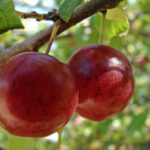Trimming your fruit trees is essential to ensure healthy fruit production. While it can seem like an overwhelming task, and you have no idea to start, somewhere is always better than nowhere! There are simple rules to follow and an annual pruning of your fruit trees will lead to a healthier tree with a heavier fruit production. It may be hard to cut off parts of the tree, but remember that by cutting off the old, the new can grow! There are a few basic rules for pruning and I will cover them in this article.
First of all, you need to prune at the right time. Never prune your fruit trees during their growing season. This is from April to September. The best time to prune is between February and March. You will be cutting off some of the fruit buds that were set out in the fall, but you should still have ample buds on the tree. If you feel you cannot prune in the late winter months, you may prune in the fall, between October and November.
Next, you want to know how much you can prune without damaging the tree. This percent is different for each species, but a rule of thumb is about 20%. If you cut off more than 20%, you may cut too much and the tree may spend the next season working to replace the missing limbs.
Now that you have the right season and the right amount, you are ready to prune. You will want to use a very sharp trimmer so that the cuts are not raged. The most important part of pruning is to remove the dead or diseased branches. If you see any branches that are broken or appear though they may break you will also want to cut those off. Then look for any damaged limbs. Also look for any branches that may cause damage to another by crushing them or preventing their growth.
After you have removed all the obvious limbs, you can begin to sculpt as you trim. Fruit trees such as apples and pears like to have one long branch through the middle, and smaller branches coming out to the sides. Other trees such as peach, nectarine and plum trees like to have an open middle. Cut off the old growth to make room for new growth during the next season. It is important to control the size of the fruit trees so that they remain small and the limbs short. If the tree is allowed to grow too tall, the fruit is not within reach. Also, it the limbs are too long, they may bend and break under the heavy weight load of a full fruit set.
As you are pruning, it is important to step back and examine your work. Examine the tree and mark any limbs that cross from one side to the next and you may trim those off. Limbs that cross the center of the tree will only cause over crowding and need to be cut off. Also cut off any shooters that are growing low on the base of the tree and along the trunk. You don’t want these little trees to form new growths.
By following these basic rules of fruit tree trimming, you should see a noticeable improvement in your fruit trees. New limb growth equals new fruit growth, so next March grab your tree trimmer and head out to your fruit trees for a trimming date! Your trees will thank you and you will reap a larger harvest.






